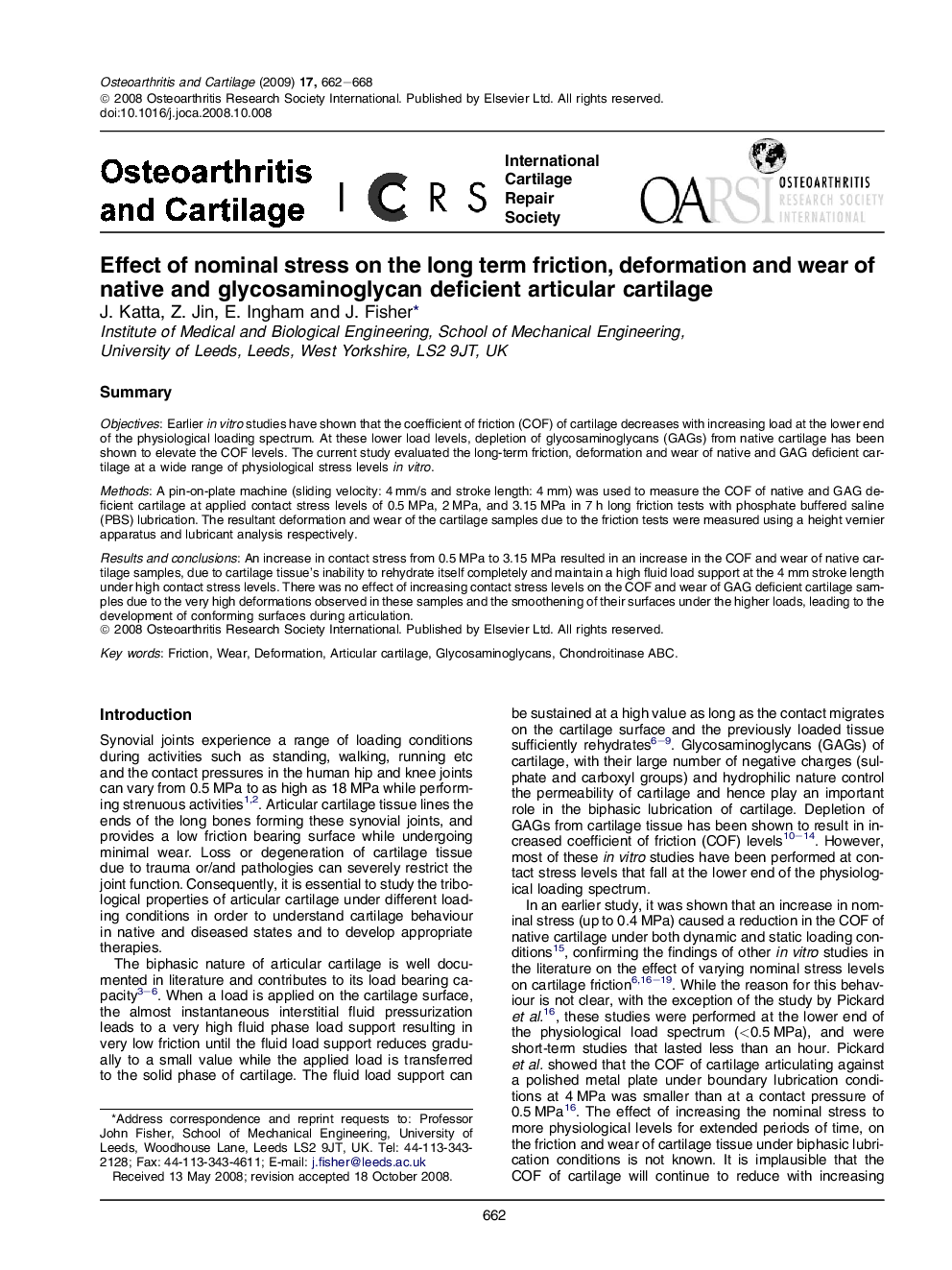| Article ID | Journal | Published Year | Pages | File Type |
|---|---|---|---|---|
| 3381194 | Osteoarthritis and Cartilage | 2009 | 7 Pages |
SummaryObjectivesEarlier in vitro studies have shown that the coefficient of friction (COF) of cartilage decreases with increasing load at the lower end of the physiological loading spectrum. At these lower load levels, depletion of glycosaminoglycans (GAGs) from native cartilage has been shown to elevate the COF levels. The current study evaluated the long-term friction, deformation and wear of native and GAG deficient cartilage at a wide range of physiological stress levels in vitro.MethodsA pin-on-plate machine (sliding velocity: 4 mm/s and stroke length: 4 mm) was used to measure the COF of native and GAG deficient cartilage at applied contact stress levels of 0.5 MPa, 2 MPa, and 3.15 MPa in 7 h long friction tests with phosphate buffered saline (PBS) lubrication. The resultant deformation and wear of the cartilage samples due to the friction tests were measured using a height vernier apparatus and lubricant analysis respectively.Results and conclusionsAn increase in contact stress from 0.5 MPa to 3.15 MPa resulted in an increase in the COF and wear of native cartilage samples, due to cartilage tissue's inability to rehydrate itself completely and maintain a high fluid load support at the 4 mm stroke length under high contact stress levels. There was no effect of increasing contact stress levels on the COF and wear of GAG deficient cartilage samples due to the very high deformations observed in these samples and the smoothening of their surfaces under the higher loads, leading to the development of conforming surfaces during articulation.
